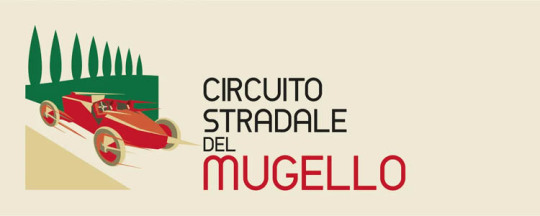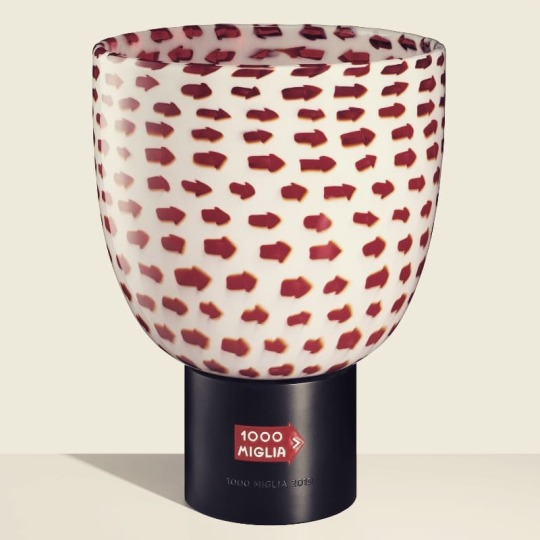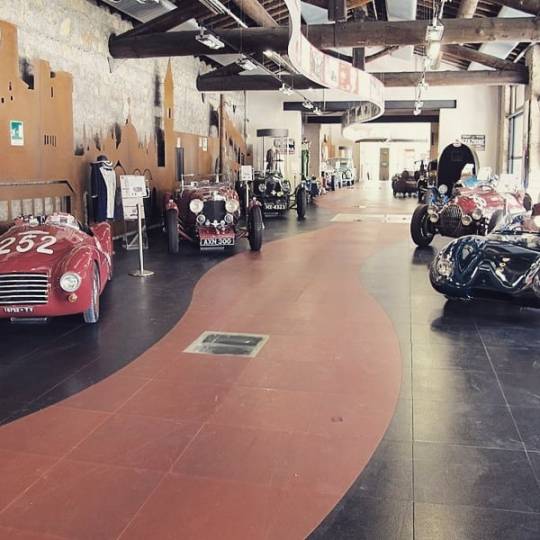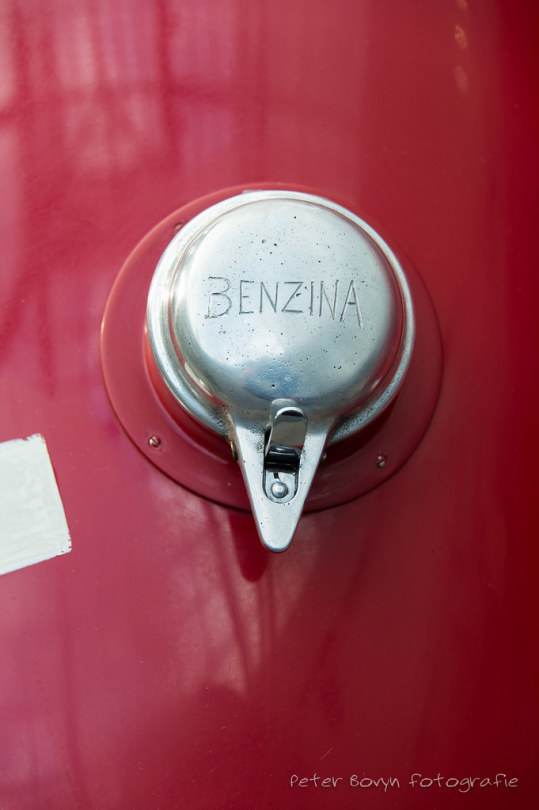#Clemente Biondetti
Explore tagged Tumblr posts
Text
A New Mille Miglia Competitor
We are in the Piazza Vittoria in Brescia as the Ferrari team checks in for the Mille Miglia which will take place on April 24-25, 1949. Standing in front of his Ferrari 166 MM barchetta n. 624 its driver Clemente Biondetti who will be the eventual winner with his co-driver Ettore Salani. The smaller competitor is a Lucciola child’s car, battery-powered and offered for half the cost of a Fiat…
#Clemente Biondetti.#Felice Bonetto#Ferrari#klemcoll#Mille Miglia#Piero Taruffi#sports car photographs
0 notes
Text
Lancia D20: dal Dopoguerra alle corse
Oggi voglio parlare con voi di un mondo che mi sta molto a cuore. Ossia, quello Lancia. E lo farò parlando della vettura che permise all’Ing. Gianni Lancia di farlo da protagonista. Cioè, Lancia D20. di Pubblico dominio, soggetto: Il “faticoso” arrivo a Brescia di Clemente Biondetti, Questa è una fotografia pubblicata in territorio italiano o ivi realizzata senza essere mai stata pubblicata…
0 notes
Text
Circuito Stradale del Mugello 2023

Dopo il successo della prima edizione, l’Automobile Club d’Italia, l’Automobile Club Firenze ed il Club ACI Storico con l’organizzazione della Scuderia Automobilistica Clemente Biondetti per il secondo anno dal 28 al 30 aprile propongono la rievocazione del Circuito Stradale del Mugello, omaggio al leggendario Gran Premio del Mugello, una delle più antiche competizioni d’Italia, disputata tra il 1914 ed il 1970. Per questa gara la partecipazione è riservata alle vetture prodotte fino al 1990 ma sarà prevista una particolare categoria per vetture gran turismo stradali costruite a partire dal 1991. La gara originaria si svolgeva in un anello di strade formate dalla Strada della Futa che unisce Firenze a Bologna e da quella del Passo del Giogo. Su questo percorso si sono sfidati negli anni piloti del calibro di Giuseppe Campari, Gastone Brilli Peri, Giulio Masetti, Emilio Materassi, Enzo Ferrari, Clemente Biondetti, Nino Vaccarella, Giovanni “Nanni” Galli, Gijs Van Lennep, Vic Elford e Arturo Merzario. L’edizione 2023 del Circuito Stradale del Mugello vede due giorni di gara che, partendo dalla Città di Firenze, toccherà le magnifiche Colline del Chianti nella giornata di sabato, per poi ripercorrere lo storico tracciato della corsa e concludersi nel Mugello la domenica. Il Circuito Stradale del Mugello entra nel Campionato Italiano Grandi Eventi di ACI Sport. La storia del Mugello ha origini molto antiche, tanto che nei comuni di Barberino, Borgo San Lorenzo e San Piero a Sieve sono stati ritrovati resti del paleolitico e si racconta che fu la tribù ligure dei Magelli ad abitare per prima la zona. Successivamente il Mugello fu invaso dagli Etruschi che costruirono la prima rete stradale che collegava Fiesole a Bologna, poi migliorata dai Romani che si stabilirono sul territorio tra il III-IV secolo a.C. Durante la caduta dell’Impero Romano d’Occidente le sorti del Mugello seguirono quelle di tutta l’Italia e nel corso del Regno Longobardo, occupava un’area di confine. Nel 1400 la parte occidentale del Paese fu dominata dalle famiglia degli Alberti e degli Ubaldini, mentre l’orientale invece era gestita dai Conti Guidi. Molto importante fu la lotta tra Firenze e la famiglia degli Ubaldini nel territorio mugellano, che era lo snodo principale del commercio verso nord e furono distrutti molti castelli degli Ubaldini, come per esempio la rocca di Montaccianico. Per placare queste lotte la Repubblica fiorentina decise di creare delle Terre nuove, cioè gli attuali comuni di Scarperia e Firenzuola, e si prometteva esenzione da tasse e protezione per tutti coloro che avessero costruito nei nuovi comuni. La storia del Mugello continuò tra il XIV e il XV secolo, quando visse un periodo di splendore grazie alla famiglia Medici, i quali costruirono sul territorio numerose ville, poi il territorio attraversò un periodo buio che migliorò sotto la famiglia dei Lorena. Nel 1860 il Mugello e la Toscana vennero annessi al regno di Sardegna. Durante la Seconda Guerra Mondiale il Mugello fu più volte bombardato e i paesi subirono numerosi danni, poi nel secondo dopo guerra l’economia della zona riuscì a rifiorire. Oggi la risorsa principale del territorio è il turismo, tra la sua storia, la natura incontaminata e l’ottima cucina. Read the full article
0 notes
Photo

Modena 1936 - Biondetti e Nuvolari
7 notes
·
View notes
Photo





You can't judge a book by its cover
1938 Alfa Romeo 8C 2900 B Lungo Berlinetta Touring
This car, during Emilio Romano ownership, won the 1947 Mille Miglia with il tosco-sardegnolo Clemente Biondetti at the wheel. But even them are impressed by Tazio Nuvolari heroic’s second place, achieved in a 1100 cc Cisitalia 202 S MM Spider under the rain.
© REVS Institute
#Alfa Romeo 8C 2900 B Lungo Berlinetta Touring 1938#Alfa Romeo#Alfa Romeo 8C#8C 2900 B#Berlinetta#Carrozzeria Touring#Touring#Touring Superleggera#1930s#vintage car#Classic Car#Sport Car#Mille Miglia#winner#Clemente Biondetti
183 notes
·
View notes
Text
Efemérides de F1 del 24 de febrero
Nacimientos:
Lance Reventlow (1936)
Francois Mazet (1943) 79 años
Alain Prost (1955) (Foto 1) 67 años
Emanuele Naspetti (1968) (Foto 2) 54 años
Pedro de la Rosa (1971) (Foto 3) 51 años
Fallecimientos:
Clemente Biondetti (1955)
Dave Charlton (2013)

0 notes
Text
“Coppa della Consuma 2022” di Elena Tempestini
I&f RotoWeb Illustrato febbraio 2022 L’ACI Automobile Club festeggia i 120 anni della più antica corsa di auto in Europa.La gara “Coppa della Consuma”, è organizzata dall’Automobilec Club Firenze per il tramite della propria società controllata Acipromuove, in collaborazione con la Scuderia Clemente Biondetti. Dal 25 al 27 marzo, la Coppa della Consuma, sarà protagonista inaugurale del…

View On WordPress
0 notes
Text
Mille Miglia Preparation

This is the scene in Ferrari’s preparation area near Brescia on April 23, 1949 the day before these cars will start the Mille Miglia. Grouped here are three of the new 166MM barchettas with Touring bodywork (nos. 624, 641 and 642) and an earlier 166 Spider Corsa (n. 630). All these cars were team cars or otherwise prepared and supported by Ferrari with professional drivers. Most of the five…
View On WordPress
#barchetta#Brescia#Clemente Biondetti#Felice Bonetto#Ferrari#Franco Cortese#klemcoll#Mille Miglia#Piero Taruffi
0 notes
Text

vintage racers Clemente Biondetti In An Alfa Romeo
4 notes
·
View notes
Text
Вот что нужно знать о ретро-ралли "Милле Милья" 👇
🇮🇹 Страна: Италия
🏟️ Старт/финиш: площадь Виале Венеция, Брешия
🧭 Маршрут: Брешиа - Рим - Брешиа (1600 км)
📆 Первая гонка: 1927 год
🏆 Наибольшее число побед:
> Mille Miglia (1927-1957) - Клементе Биондетти (4)
> Mille Miglia Storica (1977-2021) - Джулиано Кане (10)
🌎 Лучший иностранный пилот: Хуан Тонконоги (Аргентина, 3 победы)
🥇Действующие чемпионы - Андреа Веско/Фабио Сальвинелли
.
Больше деталей и новостей о ралли - на официальном сайте www.1000miglia.it (английская версия доступна)
***
Here are some fast facts about the "Mille Miglia" 👇
🇮🇹 Home country: Italy
🏟️ Start/finish: Viale Venezia, Brescia
🧭 Route: Brescia - Rome - Brescia (1600 km)
📆 Inagural race: 1927
🏆Most victories:
> Mille Miglia (1927-1957) - Clemente Biondetti (4)
> Mille Miglia Storica (1977-2021) - Guilliano Cane' (10)
🌎 Best non-Italian pilot: Juan Tonconogy (Argentina, 3 wins)
🥇Defending champions - Andrea Vesco/Fabio Salvinelli
.
More details and news on the rally are on the official website - www.1000miglia.it (English version available)
***
📸 > 1000miglia.it



#oldtimers#retro#retrorally#red arrow#frecciarossa#italy#italia#brescia#олдтаймеры#ретро#ретроралли#италия#брешиа
0 notes
Text
Circuito Stradale del Mugello 2022
Circuito Stradale del Mugello 2022
L’Automobile Club d’Italia, l’Automobile Club Firenze, il Club ACI Storico presentano dal 29 aprile al 1 maggio il Circuito Stradale del Mugello, con l’organizzazione della Scuderia Automobilistica Clemente Biondetti. Il Circuito Stradale del Mugello, storica gara di regolarità classica, ha lo scopo di far rinascere il leggendario Gran Premio del Mugello, una delle più antiche competizioni…

View On WordPress
0 notes
Photo

GP Tripoli 1940 - Clemente Biondetti sur Alfa Romeo
2 notes
·
View notes
Photo

Alfa-Romeo 6C 2300 Pescara - 1934 by Perico001 Coachwork by Cognolato in the style of Zagato Meticulous re-creation of a lost Zagato design, certified by Zagato 'An absolute novelty presented by Alfa Romeo at the 1934 Milan automobile show was the latest creation of Vittorio Jano, the 6-cylinder intended by the factory and by its designer to claim the heritage of the prestigious Alfa Romeo 1750...' – 'Le Alfa Romeo di Vittorio Jano', Autocritica, Milan, 1982. Introduced at the 1934 Milan Show, the Alfa Romeo 6C 2300 was the latest flowering of a noble line of sporting models that had originated in 1925 with the 6C 1500. The latter was the first true expression of the abiding design genius of Vittorio Jano, who had masterminded the Italian firm's meteoric rise to world-class stature in the mid-1920s. His P2 and Tipo B Monoposto racing designs proved virtually unbeatable at Grand Prix level in their heyday, while his family of six-cylinder sports-racing cars has passed into the annals of motoring history as the standard-setter of its time. The 2300's newly developed six-cylinder 2,309cc engine featured an integrally cast crankcase and cylinder block topped by an aluminium-alloy cylinder head. Two basic specifications were available: the Turismo model with a long-wheelbase chassis, and the Gran Turismo with a shortened wheelbase. In 1934, the 6C 2300 made an auspicious competition debut in the inaugural 'Giro d'Italia - Coppa d'Oro del Littorio', a race held in three stages over a total of 5,687 kilometres. Four cars with open coachwork by Brianza were entrusted to Scuderia Ferrari, which collaborated closely with Alfa Romeo on competition matters. The engines were equipped with a new inlet manifold, two 35mm Solex carburettors, and twin 3-into-1 exhaust manifolds. Thus equipped, the engines produced more than 100bhp. Other changes made to the cars included a higher final drive ratio; Bosch electrics with a second battery; an enlarged fuel tank; two fuel pumps; and the addition of a rev counter. Alfa Romeo suffered some bad luck in the course of the race, as the leading car driven by Marinoni had an accident in the second stage. However, the other three cars enjoyed more success, with the Rosa/Comotti car finishing 2nd overall, and the others finishing 4th and 5th. The model's definitive success came at the 'Targa Abruzzo - 24 Ore di Pescara' on 12/13th August 1934, when three Touring-bodied coupés finished 1st, 2nd, and 3rd with the Cortese/Severi car winning against stiff competition from the Lancia Astura driven by Pintacuda/Brivio, who had won the previous Giro d'Italia, and the two Alfa Romeo 8C 2300s of Tazio Nuvolari and Guy Moll. Capitalising on this success, Alfa Romeo decided to build a series of 60 Gran Turismo cars with the mechanical specifications of the racing Berlinetta, and with various types of coachwork ranging from saloons to open spiders. These cars were called 'Pescara' to commemorate Alfa's racing successes. They were the predecessors of the new Touring-bodied 6C 2300 B Mille Miglia models that debuted at the 1937 Mille Miglia. The car offered here is a re-creation of the racing Siluro commissioned and campaigned by Jacques de Rham, the enthusiastic young son of a Swiss nobleman and landowner. In 1935, de Rham, founded the 'Scuderia Maremmana' racing team in Grosseto, Tuscany. Only 26 years old, he had a great passion for all things mechanical. FIAT and Maserati were among the first motor cars bought for his racing stable, but he mainly favoured Alfa Romeo, buying them from Scuderia Ferrari. Clemente Biondetti drove de Rham's Alfa Romeo P3, finishing 4th overall in 1936 following victory in Rome; De Graffenried drove his 6C 1750, and finished 7th overall with the 8C 2600 at the Mille Miglia. Jacques de Rham also purchased two Alfa Romeo 6C 2300 GT Pescara models - one from 1934, the other from 1935 - both with Berlinetta coachwork by Touring, and campaigned them in various hill climbs in the first months of 1937. He decided, though, that the cars were too heavy to be successful, and had them sent to Zagato in Milan for the fitting of Siluro-type aerodynamic open coachwork in aluminium. The result was an impressive weight saving of some 300kg with the total weight remaining under 1,000kg. Zagato delivered both cars at the end of May 1937. At the same time, the engines were improved by the installation of new Borgo pistons. The cars made their racing debut at the 'Grand Prix de Provence et de Marseille' at the Miramas circuit, where Carlo Pes de Villamarina finished 1st in class in the third race. Other placings followed in various hill climbs, where the cars were campaigned by Jacques and his friends. The history of Jacques de Rham and his Scuderia Maremmana has been meticulously documented in an Italian-language book by Daniele Cantini. Sadly, neither car has survived, and we owe this Siluro re-creation to a lifelong Italian Alfa Romeo enthusiast and collector, who in this case started with a complete, matching numbers, 1934 Alfa Romeo 6C 2300 7th Series GT Pescara Berlina with coachwork by Touring. The car was completely dismantled, and the construction of the Zagato-style Siluro body was entrusted to no lesser coachbuilder than Dino Cognolato of the Carrozzeria Nova Rinascente in Padova, Italy. One of the world's finest coachbuilders, with a lifetime of experience in the craft, Dino Cognolato carried out all the work himself. Starting from 1:1 scale drawings based on historic photographs, he constructed the entire aluminium coachwork and designed from scratch small details such as the door closures, etc. At the same time, the chassis and the mechanicals were overhauled, and the engine dynamometer tested. The engine delivers a highly respectable maximum of 119bhp at 4,500rpm, which in combination with the car's low weight of only 989kg results in breathtaking performance. The project took more than four years to complete, since when this stunning Alfa Romeo has covered a mere 94 shakedown kilometres. Recently, Zagato invited this Siluro to attend a gathering of Zagato-bodied cars to celebrate the presentation of the new Maserati Mostro prototype by Zagato at the former Alfa Romeo test track at Arese. It will be offered with an official Zagato certificate; a Declaration of Authenticity, signed by the former president of the National Technical Commission of the ASI; a comprehensive photographic documentation of the restoration and reconstruction work; California Certificate of Title; and Italian import documents relating to the donor car's importation into Italy from Switzerland. As it has a genuine Alfa Romeo 6C 2300 GT Pescara chassis, this car is potentially eligible for a wide range of prestigious international events. Les Grandes Marques du Monde au Grand Palais Bonhams Estimated : € 550.000 - 750.000 Parijs - Paris Frankrijk - France February 2017 https://flic.kr/p/RP38ff
1 note
·
View note
Video
instagram
THE LAWYER'S FIRST LOVE In 1950 Gianni Agnelli, not yet "The lawyer" par excellence, bought the 166 mm. The young man knows exactly what he wants, but he still doesn't have the strength to blatantly oppose Valletta, which has absolutely forbidden him to be seen behind the wheel of any car not produced by Fiat. Bans often turn into an explicit invitation to transgression and a Ferrari is an irresistible temptation. To avoid being recognized or discovered, when going to the Touring to follow the state of the works Agnelli ensures that no one knows, parks his car far away and makes sure to depict any 'companions' commissioned by Valletta. There has been no particular discussion about the bodywork and the definition of details, including the unusual drop-shaped rear lights. But there are numerous hours spent to choose the livery. The patron of the Touring Carlo Felice Bianchi Anderloni at first was not keen on the choice of two-tone, dark blue at the top and dark green at the bottom, because he was convinced that it would mortify the lines of the 166. Obviously Agnelli didn't want to hear any reasons: the boat had to be two-tone green and blue and Anderloni eventually admitted that it was an excellent choice. It was 15 September 1948, when Ferrari presented one of its cars for the first time at the Turin Motor Show. It is the 166 mm, acronym that indicates Mille Miglia, the race won in the previous May by Clemente Biondetti and Giuseppe Navone with the 166 Inter coupÈ with Alemanno coachwork. A car destined to enter the history of motoring for its sporting successes, but first of all because it introduces a new type of car, namely the barchetta. This name, which was given to it by the press drawing inspiration from its forms, from that moment on will be the symbol of all open sports. The 166 mm is a very performing and powerful car, but its soft and simple lines also guarantee a particular elegance and will draw the guidelines of future models of the Maranello road company, is the founder and Enzo Ferrari is aware of it. For the 166 mm Touring Superleggera, Ferrari uses the Milanese body that invented the homonymous method of construction, already adopted... htt https://www.instagram.com/p/Bz3m3AHFBLh/?igshid=17p1ivomogmd6
0 notes
